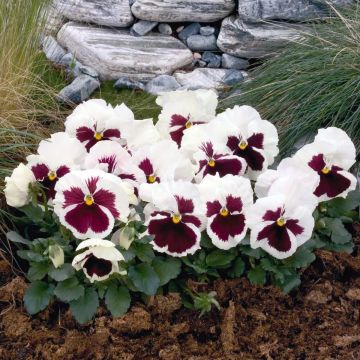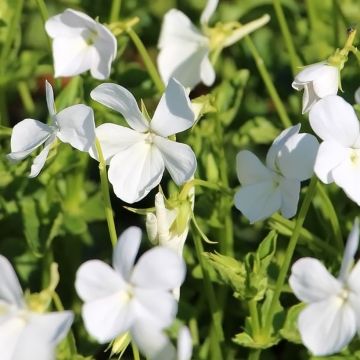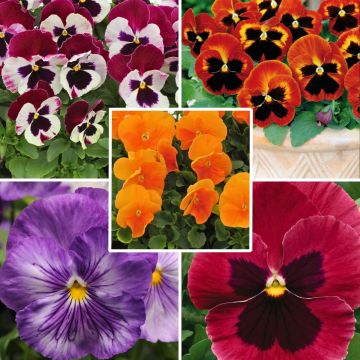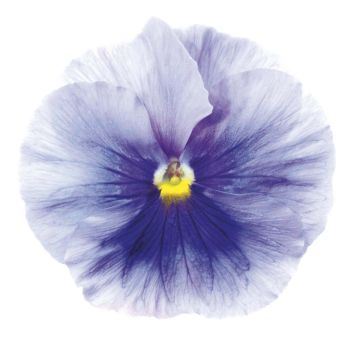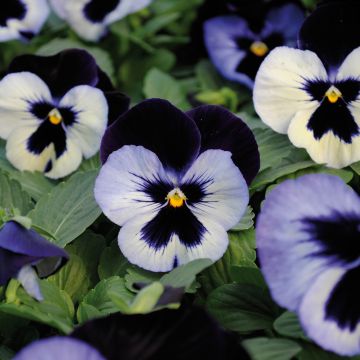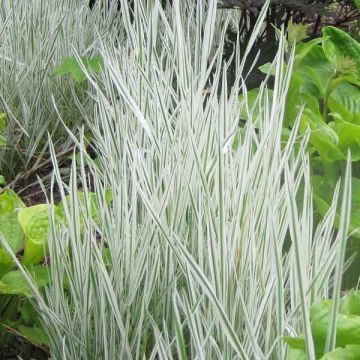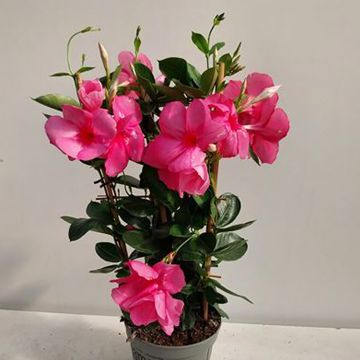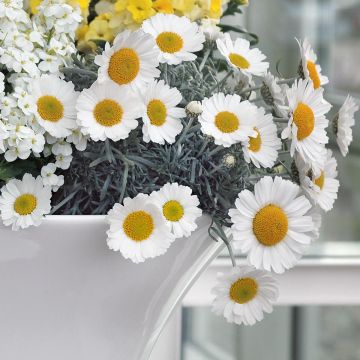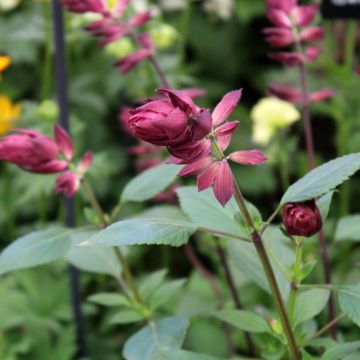Shipping country and language
Your country of residence may be:
Your country of residence is:
For a better user experience on our website, you can select:
Your shipping country:
Andorra
Austria
Belgium
Bulgaria
Canada
Chile
Croatia
Cyprus
Czechia
Denmark
Estonia
Finland
France
Germany
Greece
Hungary
Iceland
Ireland
Italy
Latvia
Lithuania
Luxembourg
Malta
Monaco
Netherlands
Poland
Portugal
Romania
Slovakia
Slovenia
Spain
Sweden
Switzerland
United Kingdom
We only deliver seed and bulb products to your country. If you add other products to your basket, they cannot be shipped.
Language:
French
German
Spanish
English
My Account
Hello
My wish lists
Plantfit
Log in / Register
Existing customer?
New customer?
Create an account to track your orders, access our customer service and, if you wish, make the most of our upcoming offers.


Viola Retombante Blanche


Viola Retombante Blanche
Viola x wittrockiana White - Pansy
Viola x wittrockiana Blanche
Garden pansy
Why not try an alternative variety in stock?
View all →Order in the next for dispatch today!
Dispatch by letter from €3.90.
Delivery charge from €5.90 Oversize package delivery charge from €6.90.
More information
This item is not available in your country.
Schedule delivery date,
and select date in basket
This plant carries a 6 months recovery warranty
More information
We guarantee the quality of our plants for a full growing cycle, and will replace at our expense any plant that fails to recover under normal climatic and planting conditions.
From €5.90 for pickup delivery and €6.90 for home delivery
Express home delivery from €8.90.
Does this plant fit my garden?
Set up your Plantfit profile →
Description
Viola x wittrockiana White is a biennial whose flowering extends from October to November and from January to April. Its trailing habit is perfect for hanging baskets, and its abundant flowers bloom generously. Its cream-white colour, along with its small yellow eye, adds a touch of softness to any composition.
The group of Viola x wittrockiana is now mainly known for the many generations of flowers resulting from numerous cross-breeding, which delight gardeners. They perfectly exploit all the desired qualities in these plants. They have excellent branching and form a tuft that varies between 15 and 20cm (6 and 8in) in height and 20 to 30cm (8 to 12in) in width. This size can even be accentuated if you provide them with fertiliser every 15 days. They thrive perfectly in balcony planters, thanks to their trailing habit, and offer sustained floribundity. These ephemeral perennial plants are grown as biennials in our climates. They produce medium green small crenate leaves in a rosette shape and elliptical form. Above these leaves, countless small flowers (3 to 4cm (1 to 2in)) composed of five petals cover the compact cushion they form. Thanks to hybridisation work, the colours are varied. They can be of a single colour, bicoloured, or speckled. They sometimes have a yellow centre, and even have small whiskers.
Pick a few flowers to sprinkle on your dishes, as their petals are edible (provided you choose to grow them without treatment).
Planted in summer, they will flourish in autumn. These vigorous plants will pass through winter without difficulty and continue to bloom in spring. As the temperatures rise, they will make way for summer flowers.
Cheerful and vibrant, these violas are essential near the house. They look wonderful in window boxes, in pots near doorways, and on patios. This way, you can enjoy their pretty faces. However, as they are accommodating and resistant, they will also brighten up the front of flower beds and easily intermingle with spring bulbs. They will harmonise beautifully with all the pastel shades of spring.
Please be aware that our young plug plants are professional products intended for experienced gardeners. Upon receipt, transplant them as soon as possible in pots, flower boxes, or directly in flower beds.
Flowering
Foliage
Plant habit
Botanical data
Viola
x wittrockiana
Blanche
Violaceae
Garden pansy
Cultivar or hybrid
Other Pansies and violas
Planting and care
Plant the plugs directly into pots or planters upon receipt. Monitor watering and regularly fertilise them (about twice a month). They prefer a sunny or semi-shaded exposure, but not too hot. If you wish to plant them in the ground, initially transplant them into a pot. Monitor watering, but do not saturate the soil. There is no need to keep them in a greenhouse. They will be content with a sheltered spot. After about a month, you can transplant them directly to their final location.
Planting period
Intended location
Care
This item has not been reviewed yet - be the first to leave a review about it.
Plug plants - Annuals
Haven't found what you were looking for?
Hardiness is the lowest winter temperature a plant can endure without suffering serious damage or even dying. However, hardiness is affected by location (a sheltered area, such as a patio), protection (winter cover) and soil type (hardiness is improved by well-drained soil).

Photo Sharing Terms & Conditions
In order to encourage gardeners to interact and share their experiences, Promesse de fleurs offers various media enabling content to be uploaded onto its Site - in particular via the ‘Photo sharing’ module.
The User agrees to refrain from:
- Posting any content that is illegal, prejudicial, insulting, racist, inciteful to hatred, revisionist, contrary to public decency, that infringes on privacy or on the privacy rights of third parties, in particular the publicity rights of persons and goods, intellectual property rights, or the right to privacy.
- Submitting content on behalf of a third party;
- Impersonate the identity of a third party and/or publish any personal information about a third party;
In general, the User undertakes to refrain from any unethical behaviour.
All Content (in particular text, comments, files, images, photos, videos, creative works, etc.), which may be subject to property or intellectual property rights, image or other private rights, shall remain the property of the User, subject to the limited rights granted by the terms of the licence granted by Promesse de fleurs as stated below. Users are at liberty to publish or not to publish such Content on the Site, notably via the ‘Photo Sharing’ facility, and accept that this Content shall be made public and freely accessible, notably on the Internet.
Users further acknowledge, undertake to have ,and guarantee that they hold all necessary rights and permissions to publish such material on the Site, in particular with regard to the legislation in force pertaining to any privacy, property, intellectual property, image, or contractual rights, or rights of any other nature. By publishing such Content on the Site, Users acknowledge accepting full liability as publishers of the Content within the meaning of the law, and grant Promesse de fleurs, free of charge, an inclusive, worldwide licence for the said Content for the entire duration of its publication, including all reproduction, representation, up/downloading, displaying, performing, transmission, and storage rights.
Users also grant permission for their name to be linked to the Content and accept that this link may not always be made available.
By engaging in posting material, Users consent to their Content becoming automatically accessible on the Internet, in particular on other sites and/or blogs and/or web pages of the Promesse de fleurs site, including in particular social pages and the Promesse de fleurs catalogue.
Users may secure the removal of entrusted content free of charge by issuing a simple request via our contact form.
The flowering period indicated on our website applies to countries and regions located in USDA zone 8 (France, the United Kingdom, Ireland, the Netherlands, etc.)
It will vary according to where you live:
- In zones 9 to 10 (Italy, Spain, Greece, etc.), flowering will occur about 2 to 4 weeks earlier.
- In zones 6 to 7 (Germany, Poland, Slovenia, and lower mountainous regions), flowering will be delayed by 2 to 3 weeks.
- In zone 5 (Central Europe, Scandinavia), blooming will be delayed by 3 to 5 weeks.
In temperate climates, pruning of spring-flowering shrubs (forsythia, spireas, etc.) should be done just after flowering.
Pruning of summer-flowering shrubs (Indian Lilac, Perovskia, etc.) can be done in winter or spring.
In cold regions as well as with frost-sensitive plants, avoid pruning too early when severe frosts may still occur.
The planting period indicated on our website applies to countries and regions located in USDA zone 8 (France, United Kingdom, Ireland, Netherlands).
It will vary according to where you live:
- In Mediterranean zones (Marseille, Madrid, Milan, etc.), autumn and winter are the best planting periods.
- In continental zones (Strasbourg, Munich, Vienna, etc.), delay planting by 2 to 3 weeks in spring and bring it forward by 2 to 4 weeks in autumn.
- In mountainous regions (the Alps, Pyrenees, Carpathians, etc.), it is best to plant in late spring (May-June) or late summer (August-September).
The harvesting period indicated on our website applies to countries and regions in USDA zone 8 (France, England, Ireland, the Netherlands).
In colder areas (Scandinavia, Poland, Austria...) fruit and vegetable harvests are likely to be delayed by 3-4 weeks.
In warmer areas (Italy, Spain, Greece, etc.), harvesting will probably take place earlier, depending on weather conditions.
The sowing periods indicated on our website apply to countries and regions within USDA Zone 8 (France, UK, Ireland, Netherlands).
In colder areas (Scandinavia, Poland, Austria...), delay any outdoor sowing by 3-4 weeks, or sow under glass.
In warmer climes (Italy, Spain, Greece, etc.), bring outdoor sowing forward by a few weeks.
